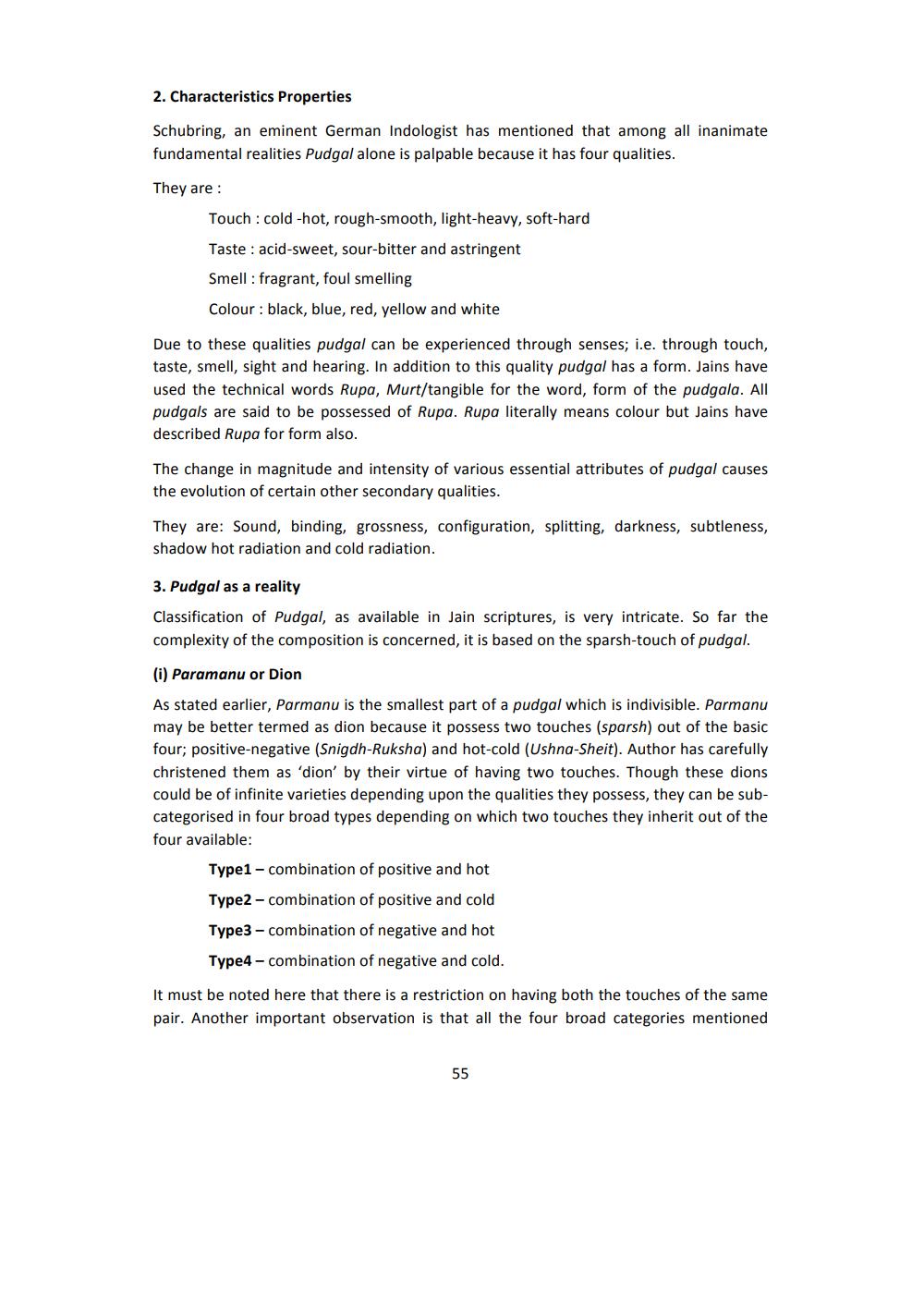________________
2. Characteristics Properties
Schubring, an eminent German Indologist has mentioned that among all inanimate fundamental realities Pudgal alone is palpable because it has four qualities.
They are :
Touch : cold-hot, rough-smooth, light-heavy, soft-hard Taste : acid-sweet, sour-bitter and astringent Smell : fragrant, foul smelling
Colour: black, blue, red, yellow and white
Due to these qualities pudgal can be experienced through senses; i.e. through touch, taste, smell, sight and hearing. In addition to this quality pudgal has a form. Jains have used the technical words Rupa, Murt/tangible for the word, form of the pudgala. All pudgals are said to be possessed of Rupa. Rupa literally means colour but Jains have described Rupa for form also.
The change in magnitude and intensity of various essential attributes of pudgal causes the evolution of certain other secondary qualities.
They are: Sound, binding, grossness, configuration, splitting, darkness, subtleness, shadow hot radiation and cold radiation.
3. Pudgal as a reality Classification of Pudgal, as available in Jain scriptures, is very intricate. So far the complexity of the composition is concerned, it is based on the sparsh-touch of pudgal.
(i) Paramanu or Dion As stated earlier, Parmanu is the smallest part of a pudgal which is indivisible. Parmanu may be better termed as dion because it possess two touches (sparsh) out of the basic four; positive negative (Snigdh-Ruksha) and hot-cold (Ushna-Sheit). Author has carefully christened them as 'dion' by their virtue of having two touches. Though these dions could be of infinite varieties depending upon the qualities they possess, they can be subcategorised in four broad types depending on which two touches they inherit out of the four available:
Type1 - combination of positive and hot Type2 - combination of positive and cold Type3 - combination of negative and hot Type4 - combination of negative and cold.
It must be noted here that there is a restriction on having both the touches of the same pair. Another important observation is that all the four broad categories mentioned
55




